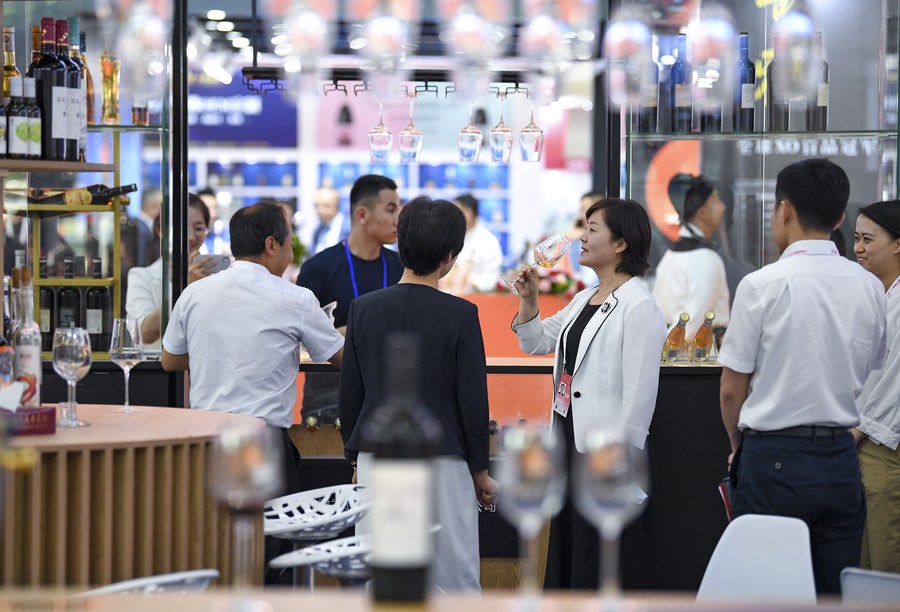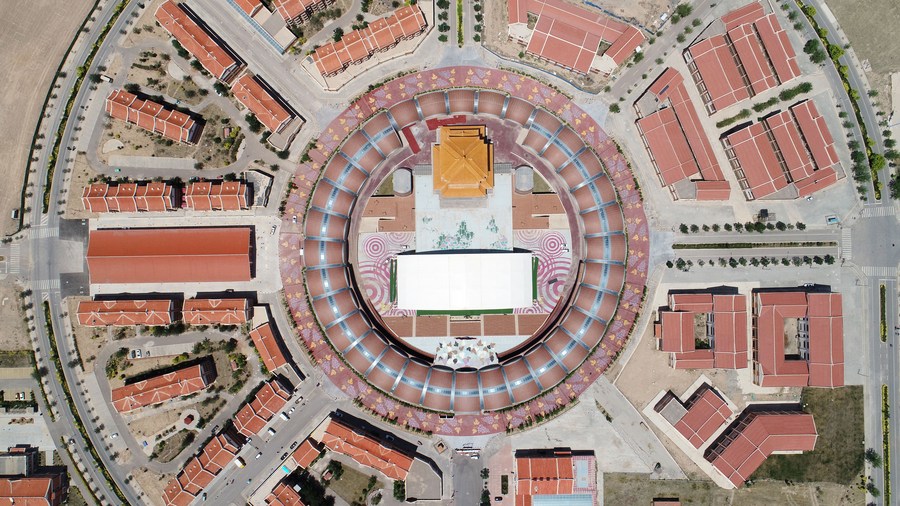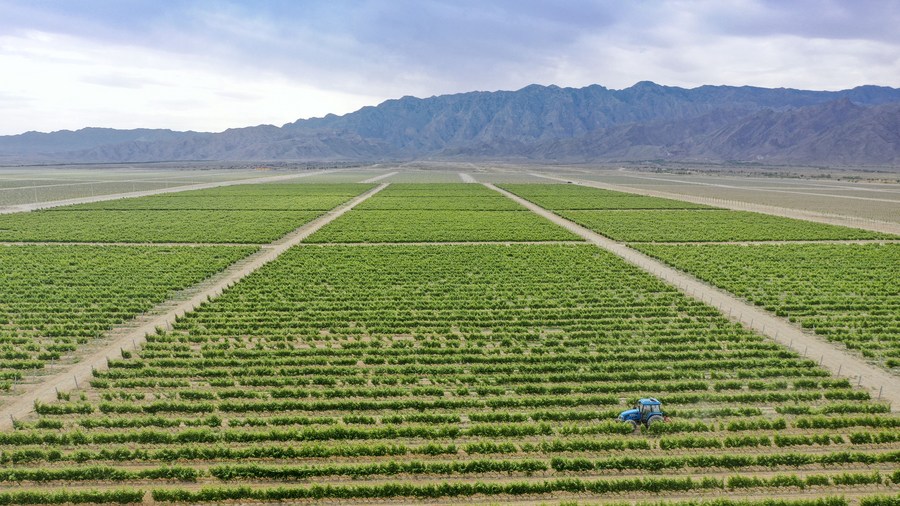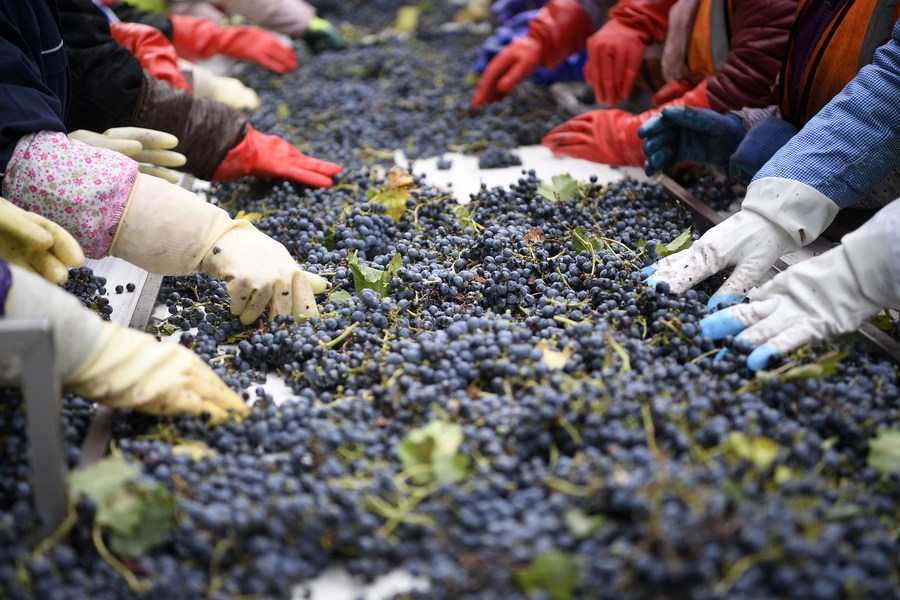* Winery owners and winemakers have transformed Ningxia from a barren land on the edge of the Gobi Desert to a leading wine-producer in China.
* The growing international recognition is evident at the International Conference on Grape and Wine Industries, and the third China (Ningxia) International Wine Culture and Tourism Expo.
* The booming wine industry in Ningxia has brought about economic development for the landlocked region, as well as plenty of job opportunities for the locals.
YINCHUAN, June 10 (Xinhua) -- For a group of visitors to his winery, Jade Vineyard, winemaker Pei Hongkai offered not only the best reds but also a beautiful rendition of Beethoven's Moonlight Sonata on a grand piano.
His boss, Ding Jian, the owner of Jade, invited him to play in order to make a point: one's artistic attainment matters in making premium wine.
"The places you have been to, the books you have read, and the people you have loved -- they all eventually contribute to, in one way or another, the wine you make," said Ding, stressing the human factor in winemaking.
Since the production of the first bottle of wine in 1984 in northwest China's Ningxia Hui Autonomous Region, a group of winery owners and winemakers have, through their handwork and ingenuity, transformed the region from a barren land on the edge of the Gobi Desert to a leading wine-producer in China.
Over the past decade, the eastern foothills of Helan Mountain in Ningxia have grown to be a rising star on the world's wine map, with local wines winning many top international awards.

People taste wine during the International Conference on Grape and Wine Industries, and the third China (Ningxia) International Wine Culture and Tourism Expo, in Yinchuan, northwest China's Ningxia Hui Autonomous Region, June 9, 2023. (Xinhua/Feng Kaihua)
The growing international recognition is evident at the International Conference on Grape and Wine Industries, and the third China (Ningxia) International Wine Culture and Tourism Expo, concurrently held on Friday and Saturday in Yinchuan, the capital city of Ningxia.
In a video address for the opening of the event, Pau Roca Blasco, director general of the International Organization of Vine and Wine, hailed China's development in winemaking.
China has all the potential, research, and new technologies to have its rightful share in shaping the global vine and wine tendencies, Blasco said.
In 2021, China launched a national pilot zone to develop premium wine on the eastern foothills of Helan Mountain.
"Ningxia's success in becoming the first Chinese pilot zone in this matter is enhancing its performance and international recognition," said Blasco.

This aerial photo taken on June 8, 2023 shows a winery in Yinchuan, northwest China's Ningxia Hui Autonomous Region.(Xinhua/Wang Peng)
WINNING INTERNATIONAL ACCOLADES
Days before the international wine-themed conference and expo opened, Chinese wines won big at this year's Decanter World Wine Awards, a leading wine competition in the world.
Nine Chinese wines were awarded gold medals, alongside 83 silver medals and 182 bronze. Ningxia leads China's wine-producing regions with 40 percent of the medals won.
Wu Zhipeng, a winemaker in Ningxia's Lansai winery, was thrilled to learn that its Yu Moli Cabernet Sauvignon 2020 was one of the three Chinese gold medal winners with the highest score of 96 points.
"The award is a great encouragement and also a confidence booster for us to continue with our efforts in making premium wine," said Wu.
As a worldwide brand ambassador with Xige Estate in Ningxia, Christelle Chene has witnessed the changing attitudes of foreign consumers towards Chinese wine over the past few years.
"At the very beginning, they had no idea about Chinese wine, but after tasting our products, they got very surprised. Some regions even begin to worry they will be surpassed by us," said Chene.

This aerial photo taken on June 5, 2023 shows a tractor weeding a wine grape planting base at the foot of the Helan Mountain in northwest China's Ningxia Hui Autonomous Region.(Xinhua/Feng Kaihua)
Xige adopts a high level of automation in winemaking. Each year, the winery produces 6 million bottles of high-quality wine, with no more than 10 workers in their fermentation workshop.
"Achieving both large quantity and high quality is also a Chinese characteristic. Few foreign wineries could do it," said Chene, who is from Burgundy, a renowned wine-producing region in France.
Zhang Junxiang, a professor at Ningxia University, attributed Ningxia's rapid development in winemaking to a number of factors, including a perfect terroir in cultivating high-quality wine grapes, the application of high technology, robust international cooperation, people's hard work, and the government's strong support.
For instance, Zhang's research team has invented a new type of pole for vine tendrils that allows each bunch of grapes to have the same exposure to sunlight, which will improve the stability of wine quality.
"Ningxia used to bill itself as 'China's Bordeaux', but today we have the full confidence to use simply our appellation: the Eastern Foothills of Helan Mountain," said Zhang.
GREEN INDUSTRIES
The booming wine industry in Ningxia has brought about economic development for the landlocked region, as well as plenty of job opportunities for the locals. Across the region, the industry provides around 130,000 jobs for local people every year.

Workers sort grapes at a winery at the eastern foot of Helan Mountain, northwest China's Ningxia Hui Autonomous Region, Oct. 14, 2021. (Xinhua/Wang Peng)
In Haoyuan Village in Yinchuan alone, there are 19 wineries and vineyards, where many local people are hired for work, such as pruning the grape vines.
Su Jinping, 51, has been working in the vineyard for two decades. She can still recall the hardship the early explorers had endured in building the vineyards.
"We cleared out the stones one by one in the dust storms and planted grape seedlings. I was really worried that they may not survive the extreme environment," recalled Su.
She feels grateful that pioneers of Ningxia's wine industry managed to overcome the hardship, as the grapes did, and are now reaping fruitful results.
In Ningxia, the wine industry has also helped turn the barren land near the Helan Mountain into a 195-km-long green belt of grape vines, where local authorities have made efforts to promote tourism.
In Haoyuan, villagers have provided homestays, barbecues, and fruit-picking tours for wine enthusiasts. Forty "wine buses" are in operation, allowing tourists to sip wine and eat grilled mutton on their way to wineries.
Official statistics show that wine-tasting tours in Ningxia attracted over 1.35 million visits last year despite the impact of COVID-19, generating an output value of 34.27 billion yuan (about 4.8 billion U.S. dollars).
"By promoting the integrated development of the wine industry, ecological conservation, and cultural tourism, Ningxia has explored a path of high-quality development," said Lei Dongsheng, an official of the Ningxia Hui Autonomous Regional Committee of the Communist Party of China.
"The direction of Ningxia's wine industry development is correct," said Nicolas Billot-Grima, a chief consultant with Stone & Moon winery, adding that the vineyards can also help fix the sand.
Billot-Grima, whose family has owned a chateau in Bordeaux for generations, believes his team in Ningxia can make the best Chinese wine from the organic vineyards.






